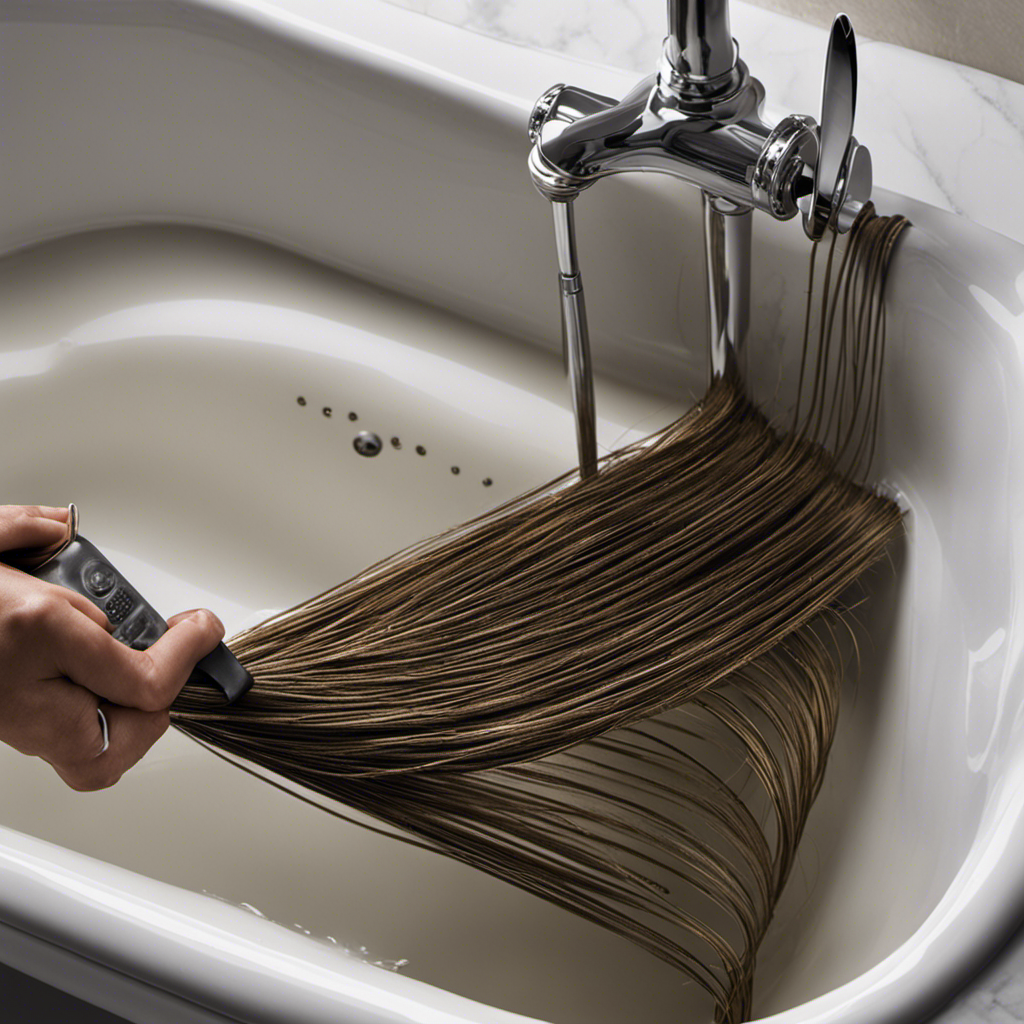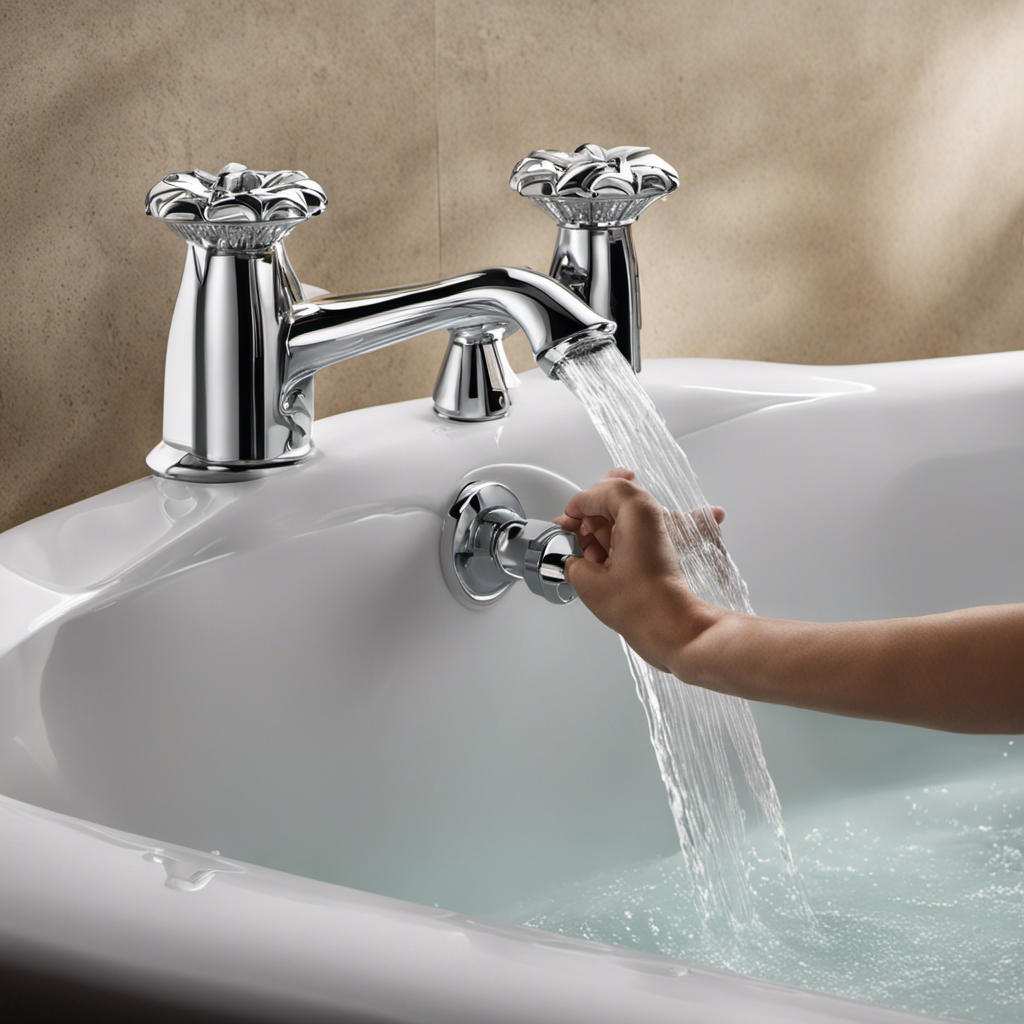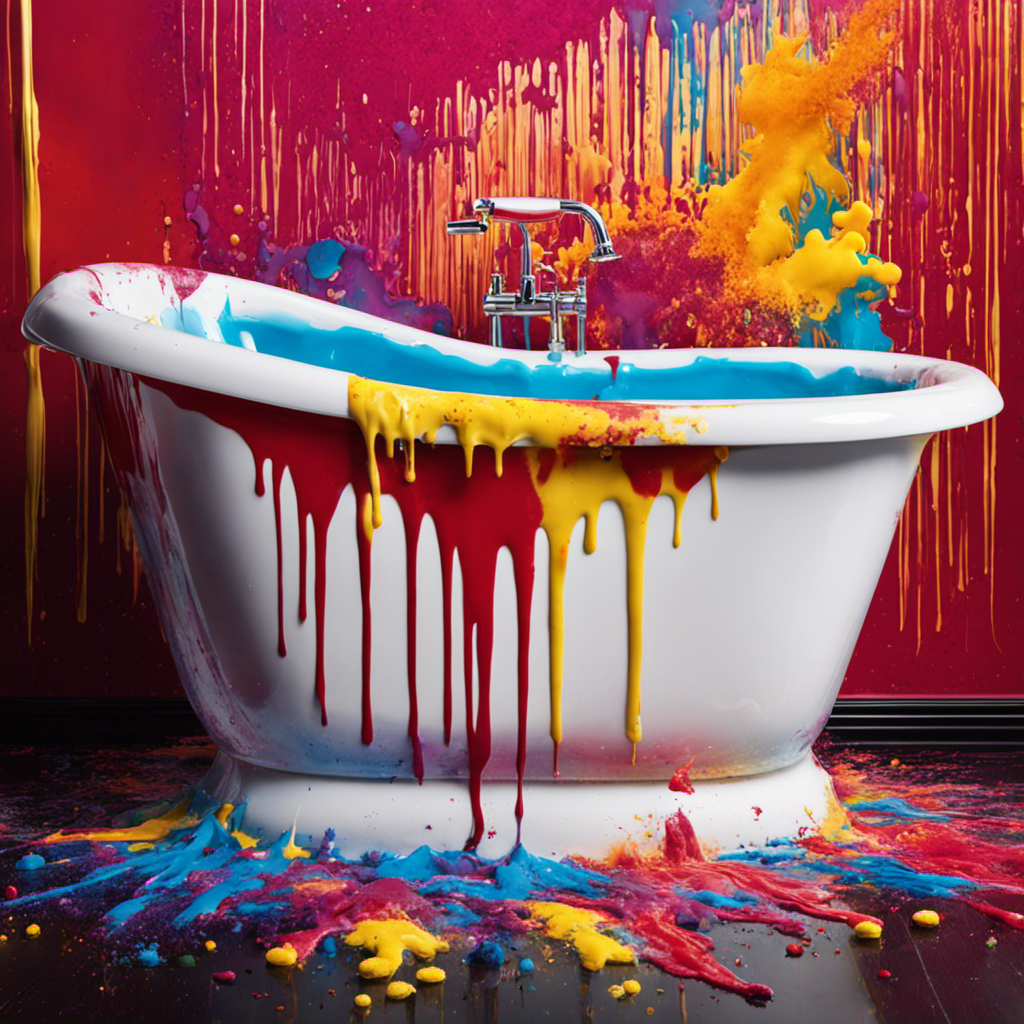I’ve had my fair share of frustrating encounters with clogged bathtub drains, especially when they’re filled with hair. It’s a common problem that can cause slow drainage or even complete blockage.
But fear not, because in this article, I’ll guide you through the process of unclogging a bathtub drain full of hair. From the tools you’ll need to the step-by-step methods, I’ll provide you with all the necessary information to tackle this issue head-on.
Let’s get started!
Key Takeaways
- Use gloves to protect hands when unclogging a bathtub drain full of hair.
- Use a drain snake or plunger to remove hair clogs from the drain.
- Avoid using harsh chemicals that can damage pipes.
- Regularly clean the drain cover and use preventive measures to avoid future hair clogs.
Tools Needed for Unclogging a Bathtub Drain Full of Hair
To unclog your bathtub drain full of hair, you’ll need a few tools.
The first tool you’ll need is a pair of gloves to protect your hands from the hair and any chemicals you may use.
Next, you’ll need a drain snake or a drain auger. This tool is essential for removing the hair clog from the drain. Make sure to select a drain snake that is long enough to reach the clog and has a hook or barbs on the end to grab the hair.
Another tool that can be helpful is a plunger. If the clog is not too severe, using a plunger may be enough to dislodge the hair.
Finally, keep in mind some common mistakes to avoid. One common mistake is using harsh chemicals that can damage your pipes. Instead, opt for more natural and effective methods.
Another mistake is not properly cleaning the drain cover, which can lead to further clogs. Remember to thoroughly clean the drain cover to prevent future hair buildup.
Preparing the Bathtub Drain for Unclogging
First, you’ll need to gather all the necessary materials for preparing the drain. To clear hair clogs and remove hair buildup from the bathtub drain, you will need a few items. Here are the materials you’ll need:
| Materials | Purpose |
|---|---|
| Rubber gloves | Protect your hands from hair and debris |
| Plastic hair snake | Remove hair clogs from the drain |
| Baking soda | Help dissolve and loosen hair buildup |
| Vinegar | Aid in breaking down hair and unclogging |
Now that you have all the materials, you can move on to preparing the drain for unclogging. Start by putting on the rubber gloves to protect your hands. Then, take the plastic hair snake and insert it into the drain. Gently push it in and twist it to catch any hair clogs. Pull out the snake and dispose of the hair. Next, pour a cup of baking soda down the drain, followed by a cup of vinegar. Let the mixture sit for about 30 minutes to break down the hair buildup. Finally, flush the drain with hot water to clear any remaining debris. With the drain prepared, you can now proceed to the next section on methods for removing hair clogs from the bathtub drain.
Methods for Removing Hair Clogs From the Bathtub Drain
Now that you have all the necessary materials, let’s explore some effective methods for getting rid of those stubborn clogs in your bathtub.
There are two main approaches you can take: chemical solutions or natural remedies. Chemical solutions are readily available at most hardware stores and are designed specifically to dissolve hair clogs. These solutions usually contain strong chemicals, so it’s important to follow the instructions carefully and use them in a well-ventilated area.
Natural remedies, on the other hand, offer a gentler alternative. One popular method is to pour a mixture of baking soda and vinegar down the drain, followed by hot water. This combination creates a chemical reaction that can help break down the hair clog. Another option is to use a drain snake or a wire hanger to physically remove the hair from the drain.
Whichever method you choose, be patient and persistent. With a little effort, you’ll have your bathtub drain flowing smoothly in no time.
Preventive Measures to Avoid Future Hair Clogs in the Bathtub Drain
Using a drain cover can help prevent future clogs by catching debris before it goes down the drain. To avoid clogs caused by hair, it is important to take some preventive measures.
Firstly, invest in a drain cover that has small holes to effectively catch hair and other debris. Place it over the drain and make sure it fits securely.
Secondly, regularly clean the drain cover by removing the collected hair and debris. This will help maintain its effectiveness.
Additionally, consider using hair removal products such as drain cleaners or enzymatic cleaners. These products break down hair and prevent it from accumulating in the drain. Remember to follow the instructions carefully when using these products.
Additional Tips and Tricks for Maintaining a Clog-Free Bathtub Drain
Regularly cleaning the drain cover and using hair removal products can help keep your bathtub drain free from clogs. However, if you find yourself dealing with a hair-filled drain, there are some additional tips and tricks you can try to unclog it.
One DIY natural remedy is to mix equal parts baking soda and vinegar, and pour it down the drain. Let it sit for about 30 minutes, then flush it with hot water.
Another method is to use a bent wire hanger to fish out the hair from the drain. Be sure to avoid common mistakes such as using chemical drain cleaners, as they can damage your pipes.
Additionally, remember to wear gloves and protect your eyes when attempting any unclogging method.
Frequently Asked Questions
How Often Should I Unclog My Bathtub Drain?
I clean my bathtub drain every few months to prevent hair clogs. To do so, I use a combination of baking soda, vinegar, and hot water. This method works well and keeps my drain flowing smoothly.
Can I Use a Chemical Drain Cleaner to Remove Hair Clogs?
Using chemical drain cleaners for hair clogs has pros (quick results) and cons (harmful chemicals). Alternatives like vinegar and baking soda are safer, effective options. Let me guide you step-by-step on how to unclog a bathtub drain full of hair.
Is It Safe to Use a Plunger on a Bathtub Drain?
Yes, it is safe to use a plunger on a bathtub drain. However, there are alternative methods to consider. Plunging can dislodge hair clogs, but there are potential risks, such as causing damage to the plumbing system.
What Should I Do if None of the Methods Mentioned in the Article Work?
If none of the methods mentioned in the article work, I would suggest exploring alternative solutions like using a plumbing snake or a chemical drain cleaner. If all else fails, seeking professional help is always a good idea.
Are There Any Natural Remedies for Preventing Hair Clogs in the Bathtub Drain?
To prevent hair clogs in the bathtub drain, there are several natural remedies you can try. By using a drain strainer, regular cleaning with vinegar and baking soda, and using a hair catcher, you can keep your drain clear and flowing smoothly.
Conclusion
In conclusion, unclogging a bathtub drain full of hair is a simple process that can be done with just a few tools and some patience. By following the step-by-step methods outlined in this article, you can easily remove hair clogs and prevent future blockages.
Remember, prevention is key, so make sure to regularly clean your drain and use preventive measures to avoid hair buildup. With these tips and tricks, you’ll be able to maintain a clog-free bathtub drain and enjoy a relaxing and uninterrupted bath.
So go ahead, say goodbye to hair clogs and hello to a smoothly flowing drain!










